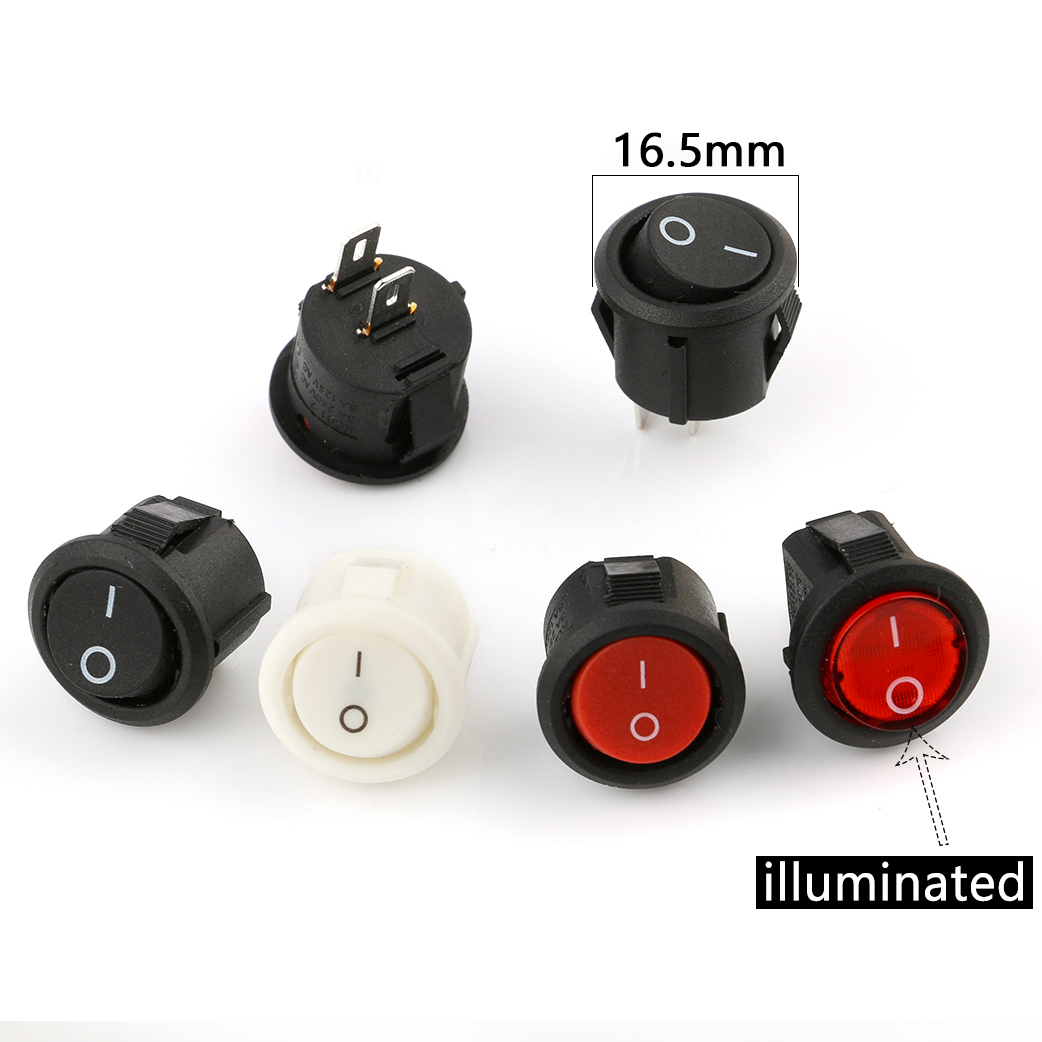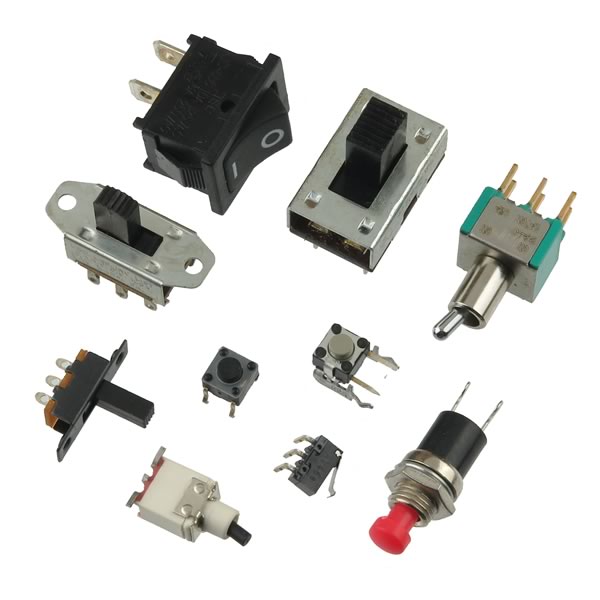Classification and introduction of different switches
There are many different types of switches. Based on their size, robustness, environmental resistance and other characteristics, they are divided into switches for industrial equipment and switches for consumer and commercial devices.
Switches in Electrical Circuits: Pole & Throw
“Pole” indicates the number of circuits that one switch can control for one operation of the switch. “Throw” indicates the number of contact points. NO and NC contacts are single throw. Changeover contacts are double throw.
If one switch can control one circuit for one operation, it is a single-pole switch. If it can control two or three circuits for one operation, it is a double-pole or a triple-pole switch.
1. SPST-NO (Single Pole Single Throw Normally Open)
The contacts close when the switch is operated. They are normally open.Use NO contacts when you want the load to operate when the switch is operated.
2. SPST-NC (Single Pole Single Throw Normally Closed)
The contacts open when the switch is operated. They are normally closed.Use NC contacts when you want the load to stop operating when the switch is operated.
3. SPDT (Single Pole Double Throw)
Changeover contacts have the functions of the both NO and NC contacts.Use changeover contacts when you want to switch two circuits when the switch is operated.

Manual Switch Operation
There are two operation patterns for Manual Switches: Momentary Operation and Alternate Operation
For a momentary operation, the switch stays ON only while it is being pressed.
For alternate operation, the ON state is held after the switch is released. The switch turns OFF when the switch is pressed again.
1. Momentary Operation
The switch is ON only while it is pressed. The switch turns OFF when it is released. For example, in crane games, the crane moves only while the switch is being pressed.
2. Alternate Operation
After you press the switch, the ON state is held even when the switch is released. To turn OFF the switch, you must press it again.
For example, the power switch on a TV uses alternate operation.
Switch Loads
The load is the device that the switch turns ON and OFF.
The load is connected to an electric circuit and it consumes electric energy.
Loads are divided into inductive loads and non-inductive loads.
An inductive load contains a coil, such as a motor.
Non-inductive loads are divided into lamp loads and resistive loads.
Switches in Electrical Circuits: Pole & Throw
“Pole” indicates the number of circuits that one switch can control for one operation of the switch. “Throw” indicates the number of contact points. NO and NC contacts are single throw. Changeover contacts are double throw.
If one switch can control one circuit for one operation, it is a single-pole switch. If it can control two or three circuits for one operation, it is a double-pole or a triple-pole switch.
1. SPST-NO (Single Pole Single Throw Normally Open)
The contacts close when the switch is operated. They are normally open.Use NO contacts when you want the load to operate when the switch is operated.
2. SPST-NC (Single Pole Single Throw Normally Closed)
The contacts open when the switch is operated. They are normally closed.Use NC contacts when you want the load to stop operating when the switch is operated.
3. SPDT (Single Pole Double Throw)
Changeover contacts have the functions of the both NO and NC contacts.Use changeover contacts when you want to switch two circuits when the switch is operated.

Manual Switch Operation
There are two operation patterns for Manual Switches: Momentary Operation and Alternate Operation
For a momentary operation, the switch stays ON only while it is being pressed.
For alternate operation, the ON state is held after the switch is released. The switch turns OFF when the switch is pressed again.
1. Momentary Operation
The switch is ON only while it is pressed. The switch turns OFF when it is released. For example, in crane games, the crane moves only while the switch is being pressed.
2. Alternate Operation
After you press the switch, the ON state is held even when the switch is released. To turn OFF the switch, you must press it again.
For example, the power switch on a TV uses alternate operation.
Switch Loads
The load is the device that the switch turns ON and OFF.
The load is connected to an electric circuit and it consumes electric energy.
Loads are divided into inductive loads and non-inductive loads.
An inductive load contains a coil, such as a motor.
Non-inductive loads are divided into lamp loads and resistive loads.

